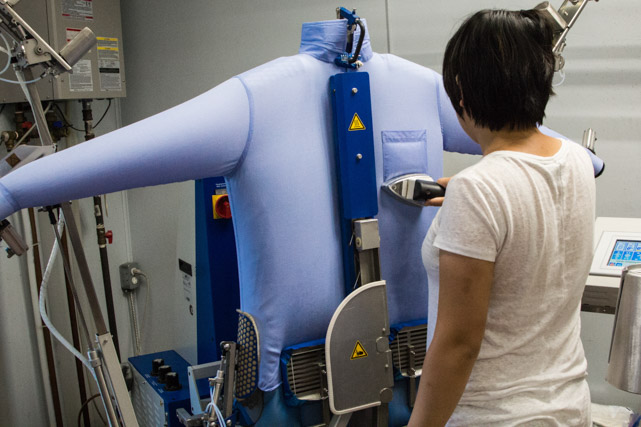With the cooler season around the corner, it’s time once again to pull out our winter jackets and wool blankets to keep us warm, and our best dresses and suits to look top-notch at upcoming holiday parties. In addition to keeping warm or dressing up, some of these items often have something else in common: that dreaded “Dry Clean Only” label. It's not just a pain to have to run your clothes back and forth to be cleaned, the real problem with dry cleaning is that it's neither dry OR clean. Here are a few reasons why you might want to think twice about taking your clothes to a dry cleaner and consider a wet cleaning alternative!
Dry cleaning dangers
Conventional dry cleaning uses a toxic chemical solvent called tetrachloroethylene (or PERC) to clean fabrics. This chemical is identified as one of the “highest concern” substances for public health in Toronto, qualified as “probably carcinogenic to humans” by the International Agency for Research on Cancer, “likely a human carcinogen” by the United States Environmental Protection Agency, and was designated “toxic” by Environment Canada in 1997. Yet, it is used by more than 80 per cent of dry cleaners across North America.

PERC and children
With their fast-developing lungs and organs, babies and children are more sensitive to chemical exposures than adults, which is why it’s important for parents to know what chemical solvent is used by their dry cleaner. If it happens to be PERC, or any of its other nasty alternatives that are often marketed as “green” and “eco-friendly” (find out about the nasty alternatives here), talk to your dry cleaner about switching to professional wet cleaning or visit a nearby wet cleaner.

Professional wet cleaning
So, what can you do if you want to clean your “Dry Clean Only” fabrics? The good news is that there is a safe, effective, and non-toxic alternative: professional wet cleaning.
Professional wet cleaning uses small amounts of water and biodegradable detergents in computer-controlled washers and dryers. This method of garment care is non-toxic to human health and the environment and is more effective at removing those dirty stains and odours from fabrics. Most importantly, it doesn’t put the health of dry cleaning facility workers at risk.
Wool is commonly considered a fabric that will shrink in water. That’s understandable. Putting a wool garment in the laundry machine will probably shrink it. With professional wet cleaning, the specialized machines can be programmed to release just the right amount of water, soap, and humidity to prevent fabric shrinkage and damage.
If you dry clean your wool garments, they will retain PERC in their fibres. It can take up to a week for a wool garment to release or off-gas just half of the PERC that it obtained during the dry cleaning process. It can take even longer if the garment is kept in a plastic dry cleaning bag. What’s even worse is that with repeated dry cleaning, PERC builds up even more and continues to off-gas in your home. Dry cleaning solvents also strip away the natural oils of the wool, making it rough and itchy.
The holidays (and life in general!) are stressful enough without fretting about the consequences of toxic fabric care. Professional wet cleaning can knock one unnecessary thing off your already long to-do list and ensure clean and toxic-free garments for you and your family.
*Originally published December 13, 2017






